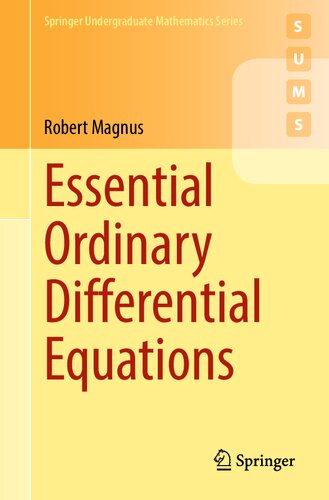

Most ebook files are in PDF format, so you can easily read them using various software such as Foxit Reader or directly on the Google Chrome browser.
Some ebook files are released by publishers in other formats such as .awz, .mobi, .epub, .fb2, etc. You may need to install specific software to read these formats on mobile/PC, such as Calibre.
Please read the tutorial at this link: https://ebookbell.com/faq
We offer FREE conversion to the popular formats you request; however, this may take some time. Therefore, right after payment, please email us, and we will try to provide the service as quickly as possible.
For some exceptional file formats or broken links (if any), please refrain from opening any disputes. Instead, email us first, and we will try to assist within a maximum of 6 hours.
EbookBell Team

4.0
76 reviewsThis textbook offers an engaging account of the theory of ordinary differential equations intended for advanced undergraduate students of mathematics. Informed by the author’s extensive teaching experience, the book presents a series of carefully selected topics that, taken together, cover an essential body of knowledge in the field. Each topic is treated rigorously and in depth.
The book begins with a thorough treatment of linear differential equations, including general boundary conditions and Green’s functions. The next chapters cover separable equations and other problems solvable by quadratures, series solutions of linear equations and matrix exponentials, culminating in Sturm–Liouville theory, an indispensable tool for partial differential equations and mathematical physics. The theoretical underpinnings of the material, namely, the existence and uniqueness of solutions and dependence on initial values, are treated at length. A noteworthy feature of this book is the inclusion of project sections, which go beyond the main text by introducing important further topics, guiding the student by alternating exercises and explanations. Designed to serve as the basis for a course for upper undergraduate students, the prerequisites for this book are a rigorous grounding in analysis (real and complex), multivariate calculus and linear algebra. Some familiarity with metric spaces is also helpful. The numerous exercises of the text provide ample opportunities for practice, and the aforementioned projects can be used for guided study. Some exercises have hints to help make the book suitable for independent study.